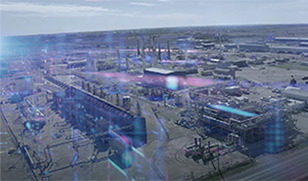Intersect Latest Features
Decline curve modeling
You can now seamlessly generate decline curves and couple them with reservoir and network models, for faster integrated scenario evaluation.
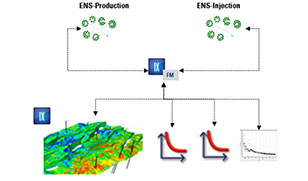
A new decline curve modeling workflow is available. It can replace a reservoir model with a set of decline curves that simulate the individual performance of wells. Decline curves can be generated from a base reservoir simulation or provided externally, and then replace rigorous reservoir simulation.
The decline curves seamlessly interact with complex field management logic and can be used in coupling models in conjunction with multiple simulation and network models.
Decline curves perform orders of magnitude faster than a rigorous simulation, making them ideal tools for scenario evaluation and optimization.
Back to top
Multiscale Sequential Fully Implicit (SFI) Simulation
Multiscale SFI is a novel methodology that enables increased performance and application of fit-for-purpose solvers to tackle challenging reservoir engineering problems.
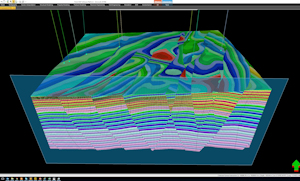
The Intersect simulator presents the first commercial implementation of this type of formulation, enabling enhanced performance of heterogeneous, high-resolution models.
Back to top
Machine Learning Enabled Reservoir Simulation
The Intersect simulator has an integrated machine learning framework, allowing the introduction of data-based intelligence into the modeling process. From new physics to faster computations, the possibilities are boundless.
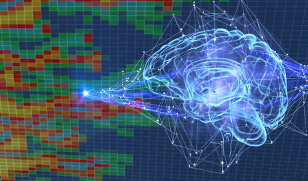
The Intersect simulator now does better physics at a fraction of the computing cost. We have introduced an alternative phase-labeling method for better prediction of fluid behavior in the simulator, based on critical temperature estimation and enhanced by neural networks. This new feature also enables the creation of 3D saturation pressure reports.
Back to top
Water Weakening
Water-weakening effects are a crucial modeling aspect of chalk reservoirs. A proven, empirical methodology to tackle this is now available through the Intersect high-resolution reservoir simulator.
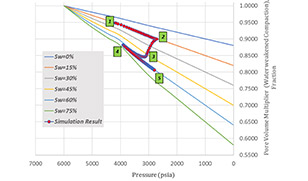
The Intersect simulator now contains an empirical model to represent the water-weak characteristics of chalk reservoirs. Dependency on fluid saturation, porosity, and stress are all accounted for.
Back to top
CO2 Storage Physics
Reservoir simulation of carbon storage operations requires the correct physics to be represented at the right resolution.
A wide range of end-to-end integrated storage workflows are now supported on the Petrel E&P software platform and in the Intersect simulator, aiming for the main trapping mechanisms in both saline aquifers and depleted reservoirs, and also including specialized physics such as solubility, diffusion, and thermal effects.
Back to top
Intersect full-GPU simulation
The Intersect high-resolution reservoir simulator now supports full-GPU black-oil reservoir simulation. Speed up your simulations and make better use of your hardware resources.

The key components of the Intersect simulator have been rewritten in GPU form. This includes a bespoke linear solver that outperforms previous implementations, and provides dramatically faster routines for property calculation and linearization of equations.
The Intersect simulator provides the best price-performance in CPU or GPU platforms with the same user experience.
The GPU implementation of Intersect is a result of the combined expertise in the partnership between SLB, Chevron, and TotalEnergies.
Back to top
Dedicated Focus on Usability
A step change in usability as well as alignment with Petrel Reservoir Engineering—all while maintaining full flexibility
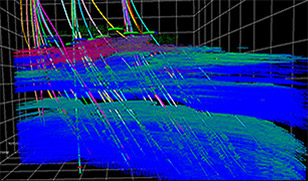
Numerous improvements have been made, including simplified inputs, fit-for-purpose reporting, enhanced field management workflows and a host of new interfaces that facilitate the use of reservoir modeling data.
Back to top
Intersect 2021 Features
Machine learning-enabled reservoir simulation
A machine learning (ML) framework is implemented in the Intersect simulator, allowing the introduction of data-based intelligence into reservoir simulation. From new physics to faster computations, the possibilities are limitless.

In the first of many workflows, we have introduced an alternative phase-labeling method for better prediction of fluid behavior in the simulation. It relies on critical temperature estimation, enhanced by neural networks. As a result, better physics can now be introduced in the simulator, at a fraction of the computing cost.
Back to top
CO2 Storage Physics
The Intersect simulator is being developed with state-of-the-art methods for CO2 storage modeling. In 2021 we have focused on modeling the Joule-Thompson effect, simple geochemistry, and mass transport.
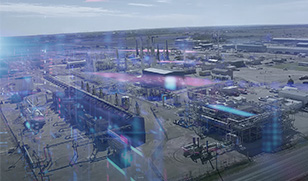
Three key developments have been introduced in Intersect to enhance the CO2 storage simulations—superheat enthalpy tables to model pressure and temperature dependency of enthalpy, solid phase for isothermal compositional simulation to model basic geochemistry through chemical reactions, and intra-phase diffusion to model mass transport.
Back to top
Full field management capabilities
Field management is a dedicated component in the INTERSECT simulator enabling complex asset operational logic via pre-defined schema that can be extended with Python capabilities. Throughout the 2021 releases, we have optimized the usability of these features.
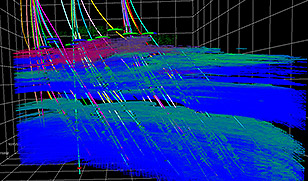
With the introduction of operational templates and dynamic constraints, advanced operational logic gas-lift management, workover operations, and surface network debottlenecking can now be modeled in a simple and straightforward way.
Back to top
Thermal
With four new key capabilities this year, the Intersect simulator has a stronger thermal simulation offering. These features enable accuracy in simulating co-solvent SAGD injections, providing better overall project economics estimating
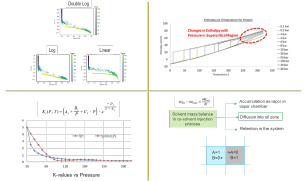
With a double logarithmic viscosity-mixing rule, two additional steam-trap well constraint formulations, pressure- and temperature-dependent component molar enthalpy, diffusion, and non-linear K-value interpolations, the Intersect simulation thermal capabilities have been optimized. Users now get faster, reliable, and accurate thermal operations results.
Back to top
Chemical enhanced oil recovery
With the alkali modeling feature, the Intersect simulator now supports the full range of alkali-surfactant-polymer chemical enhanced oil recovery simulations. These features have been developed in the Intersect simulator, so our customers now have access to superior physics features
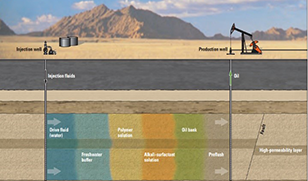
The Intersect simulator can be used to model alkali, standalone, or combined with surfactant and polymer. This release covers two main alkali effects—a reduction in surfactant adsorption due to alkali concentration and the impact of alkali concentration on effective salinity.
Back to top




